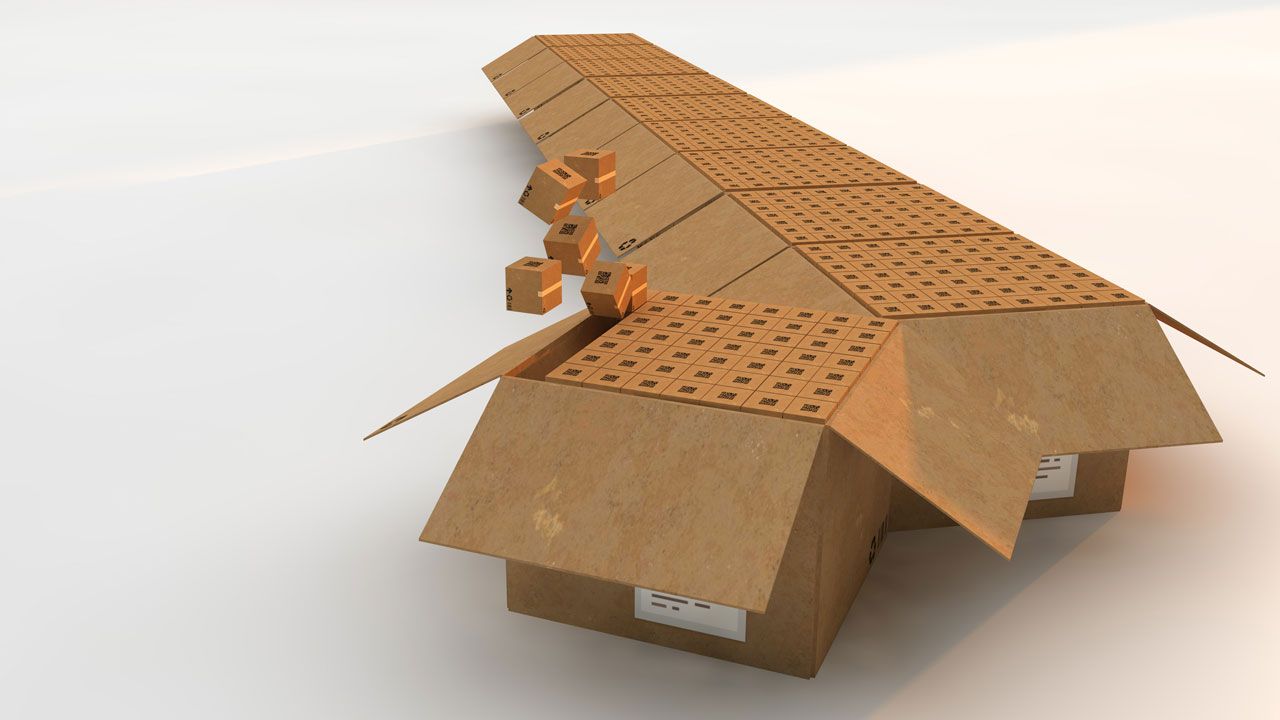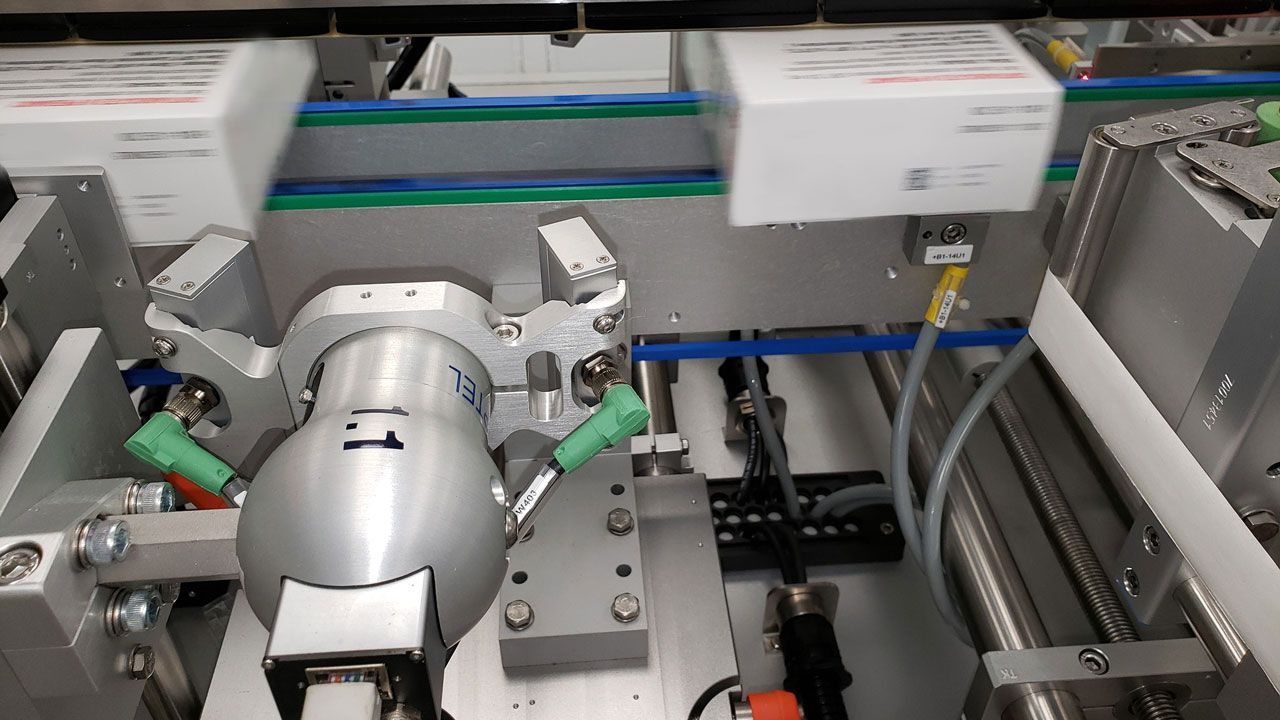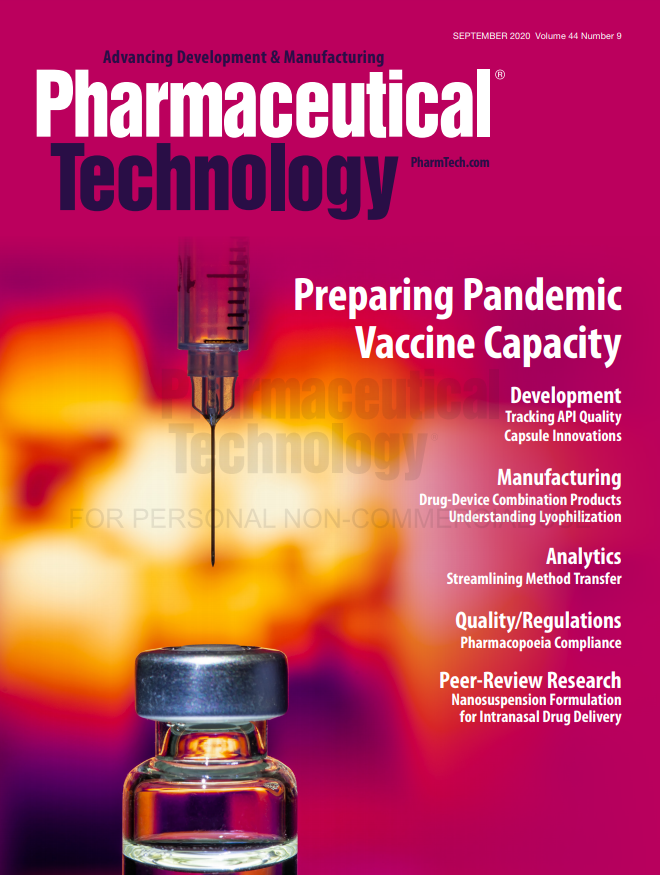Moving Forward in Serialization
Stakeholders work to meet deadlines, maximize benefits, and close gaps.
Diego-Adobe.Stock.com

Serialization plays an essential role in maintaining supply chain integrity, discouraging counterfeiting, and meeting regulatory requirements. In the United States, manufacturers are preparing for the Nov. 27, 2023 aggregation deadline to meet requirements of the Drug Supply Chain Security Act (DSCSA). “Aggregation is the process of ensuring that each unique serialized item is associated to its packaging and that packaging also includes a unique serial number,” explains Marta Schaefer, pharma account specialist at Videojet Technologies.
Europe, Asia, and Latin America have similar objectives for serialization. “It’s a global initiative,” says John Wirthlin, industry principal for Manufacturing, Transportation, and Logistics at Zebra Technologies. He adds, “The whole supply chain is affected. But the US deadlines are a little more aggressive. We are working with a couple of major pharmaceutical companies, who are looking at 10–12 months to implement a process so they will be ready 10–12 months ahead of the deadline. Global companies are looking to identify solutions and test in the US so they can finalize their process and harmonize it across the globe. The feeling is if they start here and meet US requirements, they will be able to address most requirements globally. They want a solution to be as standardized as possible so it can be rolled out to their facilities and third-party providers.”
One third-party provider that is ready to meet aggregation requirements, Reed-Lane, started up its second track-and-trace-ready cartoning line late in 2020 (see Figure 1). The line can serialize individual cartons and aggregate at multiple levels: cartons to cases, cartons to bundles, bundles to cases, and cases to pallets. It also can rework previously serialized items (1).
Figure 1. A cartoning line (Reed-Lane) meets track-and-trace requirements for unit-level serialization and multi-level aggregation. Figure is courtesy of Reed-Lane.

Data exchange
The November 2023 deadline also involves requirements for the interoperable exchange of data between entities transferring ownership of product. This system includes a secure, interoperable, electronic system between authorized trading partners through which Transaction Information (TI), such as name of the product, strength, and dosage form; National Drug Code; and Transaction Statement (TS), such as paper or electronic attestation by the business transferring ownership of the product. “In this system, for each pharmaceutical product transaction, an authorized trading partner provides TI and a TS to another authorized trading partner ‘in a secure, interoperable, electronic manner’ in accordance with standards established by guidance,” explains Steve Wood, president and CEO of Covectra.
FDA is running pilot programs involving industry standards groups such as GS1, wholesalers, and distributors. In addition, pilot programs are evaluating the use of blockchain and other communal databases. In July 2020, the Partnership for DSCSA Governance released the first version of its blueprint for the 2023 system. It focuses on interoperability standards and implementation.
Wood says, “A lot of progress has been made on the setup of the verification router service network. The focus is now on a secure way of verifying the authorized use of these systems to only allow authorized trading partners to request and respond to verification requests.”
Trends in serialization
With the US deadline for aggregation approaching, many stakeholders are creating processes and tools to improve post-serialization packaging line efficiency.
Julien Faury, solutions lead for Antares Vision Group, reports, “Everywhere we see large companies, early adopters of serialization, and contract packaging organizations upgrading their systems to meet looming aggregation mandates. Not only will this make packaging operations easier to control, but also will help supply chain partners.” However, Faury believes outside help will be needed to optimize these tools. “Many solutions are teetering on obsolescence in terms of support viability; for example, many pharma companies need to upgrade from Windows 7,” he explains. He also notes, “with trends toward switching or significantly diversifying hardware and software solutions, we need more open, transparent communication between vendors. The initiative with Open SCS [Serialization Communication Standard] is a good way to standardize such mission-critical interactions.”
With the need to upgrade initial systems that are five to 10 years old and the cost of major updates likely to be as much as a replacement, many pharma companies are identifying shortfalls and exploring the possibility of changing packaging equipment, software, and cloud serialization providers. “Amid this landscape,” Faury says, “more innovative providers are offering end-to-end coverage and digital solutions enabling value beyond compliance.”
To meet these needs, suppliers are consolidating. Systech is now part of Markem-Imaje and Antares Vision Group has made a series of acquisitions including Rfxcel and Adents to grow its cloud track-and-trace capabilities. Faury says this consolidation “will help the industry have more uniform and therefore replicable global solutions, introducing a standardization that aligns with the maturation of track-and-trace. We’re seeing more and more GS1-compliant regulation, indicative of a trend toward easier implementation and supply chain simplicity.”
Another trend is the addition of a “helper code” that is added to the bottom or top of round bottles. Schaefer explains, “When round bottles are bundled or packed into a case, helper codes allow for a vision system to easily identify the product and assign a unique serialized code to that case or bundle, which is associated with the serialized code on the bottle’s label.”
Currently, these codes tend to be applied by continuous inkjet printers. However, Videojet offers an ultraviolet (UV) laser system, which produces a high-quality permanent code on high-density polyethylene. UV laser marking creates a photochemical reaction at the surface of the material that resembles ink printing but offers higher resolution and therefore fewer false rejects and better overall equipment effectiveness. Another trend, says Schaefer, is the automation of case and pallet labeling with systems like the Videojet 9550 print-and-apply labeler.
Wirthlin reports a shift in interest from barcoding to radio frequency identification (RFID) for serialization because it offers high levels of accuracy and efficiency. Plus, tag and equipment costs have declined. “There is a big push to explore RAIN RFID,” he says. The RAIN Alliance is a global group that promotes the adoption of ultra-high frequency (UHF) RFID technology using the GS1 UHF Gen2 protocol, which ISO/IEC has standardized as 18000-63 (2). Pharmaceutical products provide a large enough target for tags to be readable at a useful distance and sufficiently high volumes for RFID to be cost-effective. If the primary container is source tagged, capturing its information offers benefits throughout the supply chain. As a result, Wirthin reports, “there is some effort to figure out how partners might share tag costs.” For example, a wholesaler saves labor time and expense if it receives tagged product and doesn’t need to do the tagging.
WLS, a ProMach product brand, also sees growing use of RFID. RFID labels can provide two points of identification per label—the chip ID plus the encoded serial number—compared to a single point of identification with a printed serial number. “RFID labels are readable without orienting the product for a direct line of sight as is needed for a printed label, facilitating tracking at the point of use,” says Peter Sarvey, director of Business Development at WLS.
Products and services
With the initial serialization learning curve scaled, pharmaceutical manufacturers have more resources available and are well positioned to work with new partners and enter new markets. The serialization and aggregation technology itself also is more mature, offering capabilities that exceed industry needs.
The T60 Integrated 360 Series from Mettler-Toledo PCE reads and verifies small product or serialization codes printed directly on round containers from 10 to 110 mm in diameter or on bottle or vial labels. The compact systems integrate easily over existing conveyors. Six image sensors capture a 360-degree image, confirm the codes are machine-readable, and identify quality issues such as smears, misprints, or skew, so only authenticated product serialization is recorded in databases. Mettler-Toledo PCE Line Manager software provides preconfigured serialization and aggregation functionality (3).
Printing codes directly on bottles and vials, instead of cartons, saves time and reduces costs by minimizing the number of labeling processes and systems on the packaging line. Manufacturers may choose either the T63 Integrated 360 Serialization system or the T65 Integrated 360 Aggregation system. The T63 unit serializes directly on the applied label instead of the traditional “label-on-web.” The T65 model obtains a full 360-degree view of products on the conveyor before insertion into secondary boxes and cases, which eliminates the need for top-down printing of helper codes and the extra processing associated with it (3).
NJM, a ProMach product brand, has introduced the Bottle Tracker and the Cumulus semiautomatic case packer. The Bottle Tracker accommodates a large range of bottle sizes and shapes in a compact machine footprint. “It provides secure code association of the actual serialized code on the label with the helper code to facilitate downstream automated aggregation of bottles in bundles and/or shipper cases,” says Omar Azam, inside sales manager at NJM.
Less expensive and smaller than fully automatic case packers, the Cumulus semiautomatic case packer supports automatic aggregation of bottles in shipper cases. Its smaller footprint allows it to fit on packaging lines currently relying on manual aggregation, where space often isn’t available for a fully automatic case-packing system.
New products from WLS include the capability to print serialized codes on labels off-line on its Autonomy digital label printer, the integration of RFID tag application on some of its labelers, and the ability to match the bottle helper code to the label serialized code (i.e., commissioning) on its RL-420 rotary labeler. The off-line printing “can replace the need for serialized code printing on the labeler itself, thus simplifying line integration,” says Sarvey. Integration of RFID tag application (either prewritten or written at the labeling station) eliminates the need for a standalone commissioning station. The company also offers RFID-ready labelers for online configurations.
Label printer/applicators from Zebra have been capable of encoding RFID tags for some time but now offer expanded functionalities to accommodate mixed pallet loads. Zebra also is testing tags with a more sensitive proprietary antenna. The tests, in partnership with two major pharmaceutical companies, examined tag performance on hard-to-read products involving liquid or metal. Four products (540 cases each) were tested for readability. Wirthlin reports, “We were able to successfully read case-level RFID labels for the majority of pharma product tested under industry-controlled processes. We achieved 99% accuracy for hard-to-read product that included dry tablets, liquid vials, prefilled injectables, and foil blister packs. The cases were tagged with Zebra’s ZBR4000 inlay and loaded onto pallets. The pallets were loaded onto a truck via forklift at normal speeds and read by our Zebra Transition RFID Portal at the dock door.”
Covectra recently introduced a modular Serialization Packaging Platform, which can be located anywhere in the supply chain—manufacturer’s warehouse, contract manufacturing organization, third-party logistics provider, wholesaler, or distributor. The Serialization Packaging Platform is designed on GS1 general specifications and is extensible and modular. “The same platform can be configured for manual, semi-manual, and completely automated environments,” says Abhijeet Bhandari, Director of Software Engineering at Covectra. It also supports scenarios where existing aggregation hierarchies are reworked while maintaining data integrity.
For repackagers, Covectra has added the Atlas Repackaging System component to its Atlas Serialization Platform. It enables cost-effective relabeling of previously serialized products and rework products, and it accounts for products removed after packaging for quality-control processes. Targeted toward small and mid-size pharma companies and designed according to good manufacturing practices, the Atlas Repackaging System complies with US Code of Federal Regulations (CFR) 21 Part 11, GS1, and Healthcare Distribution Alliance specifications as well as DSCSA barcoding guidelines for serialized products at manufacturing or packaging operations. The agnostic system connects to commonly used printers, vision systems, and barcode scanners and provides complete reporting features on reworked or relabeled orders (4).
Future outlook for serialization
Noting that reconciliation remains a manual process in many organizations due to the absence of a standardized process, Bhandari believes, “exception handling and reconciliation of serialized product with the data still needs work on the packaging lines and within systems exchanging serialized data information.” The lack of these checks inevitably leads to exceptions where the physical serialized product and the data with the identifiers for those products do not match, generating “Product/No Data” or “Data/No Product” exceptions. Bhandari says, “We believe more validation checks need to take place by communicating standardized volume information along with the standard [Electronic Product Code Information Services] data formats for this purpose.”
The key to addressing the latest DSCSA requirements is digitizing and sharing information. “We need to connect partners and eliminate silos,” concludes Wirthlin.
References
1. Reed-Lane, “Reed-Lane Adds 2nd Carton Track & Trace Line with Aggregation Capabilities, and Expands Injectables Kitting Operations,” Press Release, Dec. 3, 2020.
2. RAIN Alliance, “RAIN RFID Technology,” https://rainrfid.org accessed July 20, 2021.
3. Mettler-Toledo PCE, “New T60 Integrated 360 Series Reduces Cost and Complexity on Liquid Pharma Packaging Lines,” Press Release, June 28, 2021.
4. Covectra, “Covectra Enhances ATLAS Serialization Platform to Simplify the Repackaging of Pre-Serialized Products,” Press Release, June 22, 2021.
About the author
Hallie Forcinio is packaging editor for Pharmaceutical Technology, editorhal@sbcglobal.net.
Article Details
Pharmaceutical Technology
Vol. 45, No. 9
September 2021
Pages: 34–38
Citation
When referring to this article, please cite it as H. Forcinio, “Moving Forward with Serialization,” Pharmaceutical Technology, 45 (9) 2021.

Drug Solutions Podcast: A Closer Look at mRNA in Oncology and Vaccines
April 30th 2024In this episode fo the Drug Solutions Podcast, etherna’s vice-president of Technology and Innovation, Stefaan De Koker, discusses the merits and challenges of using mRNA as the foundation for therapeutics in oncology as well as for vaccines.
Pharmaceutical Tariffs Are Imminent: How Industry is Bracing for Impact
April 16th 2025On April 14, 2025, the Trump Administration launched a national security-driven investigation into pharmaceuticals, a move that will likely result in tariffs being placed on pharmaceutical drugs, ingredients, and other components that are imported from outside of the United States.